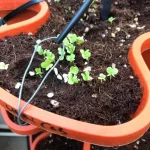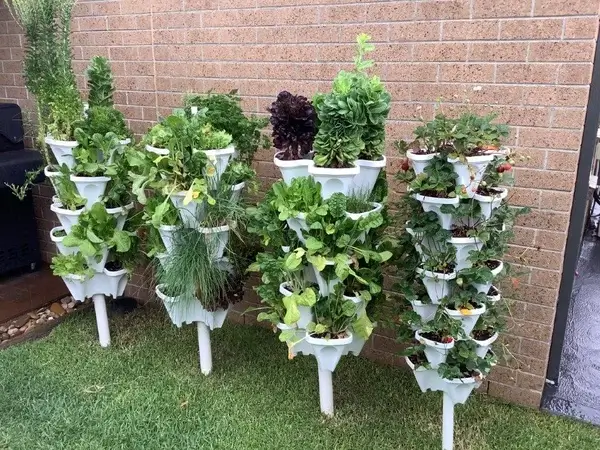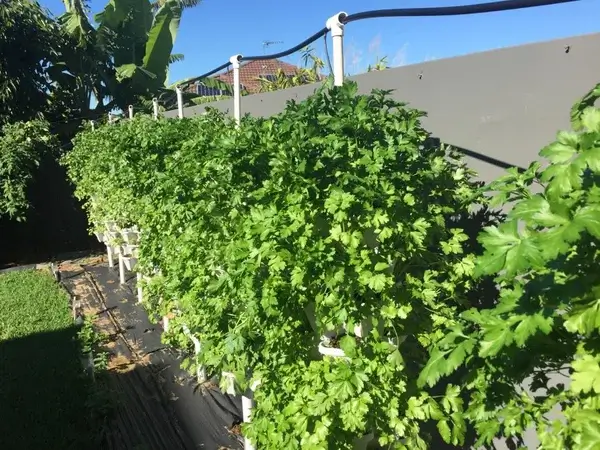Coco coir is an extremely popular growing medium choice, especially for hydroponic growers. It is made up from coconut fibre, which has been torn away from coconut shells. When grounded, it has a light, fluffy but absorbent texture. It can actually encourage plants to grow faster and has trichoderma in it, which can help enhances the immune system of plants and control nutrients.
The coconuts will go through a retting process, which means they are cured by naturally decomposing the coconut husk’s pulp. This process will take just over a week to complete. Then, a method called defibring removes the coconut fibre from the shells, using fine combs. The coco coir is then dried and pressed into blocks or bagged up loose, in or to sell to customers.
Coco coir is light and airy and can create large plants and big yields, although it will need more water than traditional soil does. It is also incredibly environmentally friendly! It also holds up to 22% oxygen when it is fully saturated. Coco coir can be very forgiving, and it can be hard to over water your plants, as it can still hold oxygen when fully saturated. This is a great growing medium for beginner growers and works great with Mr Stacky systems.
After rinsing, it can usually be used up to three times, unlike peat, which will break down quickly. Pests and bugs do not like coco coir as much as other mediums too, which means you are less likely to worry about plant damage from little creatures.



 At Mr Stacky, we sell both a re-circulating system, which can run off solar or electric power, and a drain to waste vertical garden.
Our drain to waste vertical gardens are a little bit special. Instead of allowing water to run off, you only water just the right amount, so the runoff is very minimal. This ensures the plants get the right amount of water but leaves no room for water waste- winning!
When the bottom of the stacked garden starts to drip, it is a sign that the above layers are saturated, and you should stop watering. As a rule of thumb, it is much better to provide regular small doses of water opposed to less regular but longer feeds. For example, our vertical stacked gardens are recommended to feed 3 times per day, as an example let’s say, 9am, 1pm, 5pm. If using an automated timer, set it to 1 minute per feed.
Using a drain to waste system means you do not have to worry about buying pumps and other gear. If on the other hand you always forget to water, then perhaps try our solar smart farm, which will water for you! You can also turn the stacked towers into a circulating system if that suits you. Simply add a drip tray which can be fastened to the riser pipe of each tower. Attach grommets and tubing so you can return it back to the reservoir.
If you want to try coco coir, why not buy some today from our site!
At Mr Stacky, we sell both a re-circulating system, which can run off solar or electric power, and a drain to waste vertical garden.
Our drain to waste vertical gardens are a little bit special. Instead of allowing water to run off, you only water just the right amount, so the runoff is very minimal. This ensures the plants get the right amount of water but leaves no room for water waste- winning!
When the bottom of the stacked garden starts to drip, it is a sign that the above layers are saturated, and you should stop watering. As a rule of thumb, it is much better to provide regular small doses of water opposed to less regular but longer feeds. For example, our vertical stacked gardens are recommended to feed 3 times per day, as an example let’s say, 9am, 1pm, 5pm. If using an automated timer, set it to 1 minute per feed.
Using a drain to waste system means you do not have to worry about buying pumps and other gear. If on the other hand you always forget to water, then perhaps try our solar smart farm, which will water for you! You can also turn the stacked towers into a circulating system if that suits you. Simply add a drip tray which can be fastened to the riser pipe of each tower. Attach grommets and tubing so you can return it back to the reservoir.
If you want to try coco coir, why not buy some today from our site!

Different types of coco coir
You can buy coco coir either pre-hydrated or as a condensed brick, which you will need to hydrate yourself by soaking it in water. There are also three main types of coco coir to choose from (pith, fibre, or chips). Coco Pith is dense and can hold water really well. It can feel a lot like soil and is light, with a rich brown colour. It also allows a lot of oxygen into the mix. As coco pith holds a lot of water, Mr Stacky recommends a mix of 80/20 with perlite added (80% coco, 20% perlite). The perlite will help with air flow. Coco Fibre will allow oxygen to enter through the roots and has a more stringy-like texture. Coco fibre is not that absorbent by itself, so you may want to add some coco pith to increase water retention. Coco chips are very chunky, creating large amounts of air pockets but they can also retain water very well. Benefits of using coco coir There are plenty of reasons you should make the switch to coco coir… (trust us, you won’t want to go back to soil!) • When used with drain to waste growing (more on that below), coco coir can produce bigger yields and can harvest quickly. • It has a neutral pH of around 5.2–6.8, which can provide great growing conditions. • It is reusable and durable, so you can use it for a second or third set of plants. • It has excellent drainage, aeration, and water retention, so it does not drown your plants. • It is environmentally friendly, as the coconut husks used to make it would just be going to waste anyway. • It can help to reduce pests by minimalizing any harmful pathogens present. • It can also be used in combination with sandy soil or clay, to improve its texture.What nutrients to add to coco coir
As coco coir is mostly inert, we use a full spectrum powdered hydroponic nutrient called Superior Blend and simply add this to the water and water daily. Fro all our existing customers, you know this stuff works! Check out the results Watch out for cheap coco coir mixes, as some can have high levels of sodium or chlorine which is not good for your plants. Coco coir also tends to hold in nutrients such as calcium, magnesium, and iron. To help with this, you can buy a nutrient solution designed for growing in coco coir growing medium.
How to water when using coco coir
Watering your plants with coco coir means you will need to ensure they have enough nutrients, as it does not naturally contain any. To ensure you have watered correctly, the entire growing medium should saturated/ wet, with a little running off at the bottom. You will need to water everyday with coco coir. This can help to avoid any salt building up, which can harm your plant. Usually, around 20% of the water should be running off your plant. The coco coir should stay moist all the time. The coco coir should not appear dry and should still be a little moist from the last watering. If it starts to look dry or is turning a light brown colour, then start watering more. For those who have always grown in soil, it can feel like you are overwatering, but follow the steps above and you should be doing it correctly. Water your plants once or twice a day during the first vegetative phase and increase this to 3 to 4 times a day during the flowering period. If using a timer with Mr Stacky automated watering, set the timer to water 3 to 4 times per day, for 1 minute each time.What is a drain to waste system?
Drain to waste is simply when you water your plants and let some water run off at the bottom (commonly around 15 to 20 percent). This water is then discarded. A recirculating system will use a pump to distribute any left-over water or nutrient solution to your plants. There are advantages to both, and at Mr Stacky, we use both types of system. There is not really a ‘better’ option between the two, but rather what suits your needs better. In a drain to waste system your plants will get fresh water and nutrients at every feed. In a recirculating system the nutrients get reused, although it can save the amount of water you use as none goes to waste.Mr Stacky drain to waste systems

 At Mr Stacky, we sell both a re-circulating system, which can run off solar or electric power, and a drain to waste vertical garden.
Our drain to waste vertical gardens are a little bit special. Instead of allowing water to run off, you only water just the right amount, so the runoff is very minimal. This ensures the plants get the right amount of water but leaves no room for water waste- winning!
When the bottom of the stacked garden starts to drip, it is a sign that the above layers are saturated, and you should stop watering. As a rule of thumb, it is much better to provide regular small doses of water opposed to less regular but longer feeds. For example, our vertical stacked gardens are recommended to feed 3 times per day, as an example let’s say, 9am, 1pm, 5pm. If using an automated timer, set it to 1 minute per feed.
Using a drain to waste system means you do not have to worry about buying pumps and other gear. If on the other hand you always forget to water, then perhaps try our solar smart farm, which will water for you! You can also turn the stacked towers into a circulating system if that suits you. Simply add a drip tray which can be fastened to the riser pipe of each tower. Attach grommets and tubing so you can return it back to the reservoir.
If you want to try coco coir, why not buy some today from our site!
At Mr Stacky, we sell both a re-circulating system, which can run off solar or electric power, and a drain to waste vertical garden.
Our drain to waste vertical gardens are a little bit special. Instead of allowing water to run off, you only water just the right amount, so the runoff is very minimal. This ensures the plants get the right amount of water but leaves no room for water waste- winning!
When the bottom of the stacked garden starts to drip, it is a sign that the above layers are saturated, and you should stop watering. As a rule of thumb, it is much better to provide regular small doses of water opposed to less regular but longer feeds. For example, our vertical stacked gardens are recommended to feed 3 times per day, as an example let’s say, 9am, 1pm, 5pm. If using an automated timer, set it to 1 minute per feed.
Using a drain to waste system means you do not have to worry about buying pumps and other gear. If on the other hand you always forget to water, then perhaps try our solar smart farm, which will water for you! You can also turn the stacked towers into a circulating system if that suits you. Simply add a drip tray which can be fastened to the riser pipe of each tower. Attach grommets and tubing so you can return it back to the reservoir.
If you want to try coco coir, why not buy some today from our site! 
About the Author
Mr Stacky is the leader in Tower Garden Systems in Australia, specializing in commercial hydroponic farming, urban farming & residential vertical gardening.
Find out how he can help you achieve your food production goals. Contact Brian
